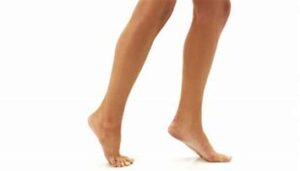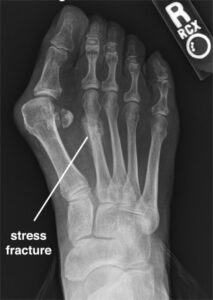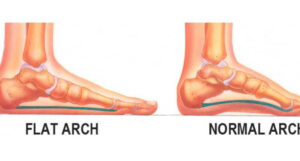Trying the new lateral impact loading method, I tried looking at activities that people are already doing that generate lateral impact loading. Muay Thai shin conditioning seemed to only be surface level conditioning, gymnastics and punching generate axial impact loading(punching may occasionally generate lateral impact on the metacarpals but really you want to punch with the knuckles), and tennis may occasionally generate lateral impact but the force is entirely dependent on the speed on which you receive the ball.
But it looks like running may generate lateral impact in the metatarsals. I originally thought that most of the impact in running is axial and absorbed in the heel but when doing up stairs I do have lateral impact on my metatarsals. So where the impact is on the foot depends on the style and type of running and jumping. And it looks like the forces in running are sufficient to induce microfracture in the metatarsals.
Now stress fractures in the metatarsals do seem to occur mostly in people with bone disorders but if the lateral impact is sufficient to induce a stress fracture even in a bone weakened state then it is probably sufficient to induce longitudinal bone growth. This isn’t perfectly true as the frequency will be different. The stress fracture could not necessarily be a result of lateral impact loading it could be repetitive torsional forces for instance.
The question is whether is there any evidence that the repetitive impact loading on the metatarsals induced by running and jumping induces longitudinal bone growth? The answer is maybe. In pregnancy and running, the increase in shoe size is thought to be a decrease in arch size.
Look at the metatarsals, if the metatarsals got longer then the arch size would be reduced because the metatarsals are closer to the ground then the other bones thus reducing the arch angle. So longer feet via metatarsal growth would be the cause of the flatter arches rather than flatter arches being the cause of feet growth.
Let’s look at the paper “Dimensional changes of the feet during pregancy.” “Women commonly report that the feet become larger during pregnancy. These changes could be due to the ac- cumulation of fluid or fat, or both, or to changes in ligaments caused by the extra weight that is carried during pregnancy or by hormonally induced alterations of the connective tissue in the ligaments. ” They couldn’t find a statistically significant difference in foot length due to pregnancy. Since most foot increase is due to occasional anecdotal evidence it’s likely that most scientific studies haven’t had the sample size to find the needle in the haystack of women who had the right force to increase foot length.
Ideally, we’d find a sport or culture where people walk and run like this  then we can be pretty confident that all the load is going to to the metatarsal.
then we can be pretty confident that all the load is going to to the metatarsal.
If there are anecdotal cases of pregnancy and running increasing foot length then that is some evidence which could possibly occur via the metatarsals then that is some evidence that lateral impact loading can increase bone length. But there does not seem to be sufficient studies of the effect of running on metatarsal length. You’d have to run in a certain style to induce lateral impact on the metatarsals and the frequency and stimulus would have to be sufficient to induce longitudinal bone growth. This would be hard to capture in a study. And what’d you expect to see is occasional anecdotal evidence.
Apparently, some runners actually get shorter feet from running. This is speculated due to be to tighter ligaments. You’d expect the ligaments due to get tighter due to the being over stimulated. Like how muscles shorten due to being constantly overstretched. This is actually support that certain types of running may lengthen the metatarsals through lateral impact as constant stretching is not consistent with lengthening it is usually consistent with tightening up.
We need to look more through anecdotal evidence and try to find patterns. We should also look at ligament laxity and see if running foot size can really be explained by it.
Here’s a study on impact loading and running:
| N-BSI (n = 14) | 1-BSI (n = 16) | M-BSI (n = 15) | p main effect | |
|---|---|---|---|---|
| Age (year) | 27.5 ± 4.3 | 27.2 ± 6.1 | 25.5 ± 3.3 | 0.08 |
| Height (m) | 1.65 ± 0.06 | 1.65 ± 0.07 | 1.69 ± 0.06 | 0.20 |
Interesting that runners with multiple bone stress injures were taller. Possible evidence that fractures increase height or that height predisposes one to bone stress injuries?



Tyler this is a bit off topic but I forgot to mention this, how hard do we clamp? Personally I’m using the Irwin quick grip atm I mean do we clamp to the point of pain?
Regards
You guys don’t know WTF ur doing. Please start telling people to use multiple clamps at a time as it is orders of magnitude more effective. Call me when you reach outlier levels of height growth (3”+). I have grown 4 maybe even 4.5” taller due to my highly effective method and my height will continue to rise. Thank you and have a nice day.
– The outlier of LSJL
Please share your method.
Hey Tyler I sent you a message on the LSJL forum about this if you could respond that would be great and we could correspond about this height seeking endeavor. I’m focused on the spine (harder to grow) nowadays since my legs are really long from LSJL. Basically what I would do is load the knees but with four clamps. Two on each leg loading both the humerus and the tibia at the same time. I think you guys get the idea. Lmk if u have any questions guys.
Best,
Assortedsnacks
Sorry I meant to say femur not humerus my bad.
assortedsnacks how old are you??
Would love to hear your method mate.
Please share your method with the community.